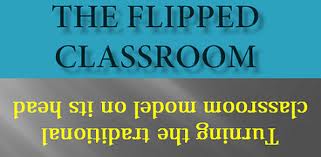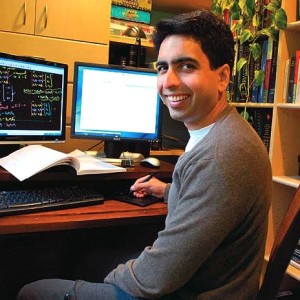10. Born in New Orleans in 1976, Salman “Sal” Khan holds four university degrees, three from MIT (a BS in mathematics, a BS in electrical engineering and computer science, and an MS in electrical engineering and computer science) and one from Harvard (an MBA).
9. Khan became interested in education in 2004 when he learned that his 12-year-old cousin Nadia had failed a mathematics placement test despite being “a straight-A student, highly motivated, always prepared” (Salman Khan, The One World Schoolhouse: Education Reimagined, Kindle Edition, October 2012, page 16). Sal was determined to understand why his cousin had struggled and to help her succeed the next time.
8. In grappling with Nadia’s challenge and thinking about how best to assist her in improving, Kahn came to believe in a number of precepts about education:
a. students should have a deep mastery of basic concepts before they advance to more sophisticated ones;
b. each student progresses at a different rate from other students, meaning that the lessons he or she has to complete before advancing to a higher level should be paced according to his or her needs;
c. students are best served when teachers give them direction, but then allow them both the freedom to work on mastering a concept for as long as necessary and the personalized feedback they require before being able to move on to the next one.
7. Faced with requests for help from other relatives and friends, Khan decided that the most effective way to communicate with them was to post 10-minute lessons on YouTube and then to follow-up with each in person. Beginning in 2006, the response was extraordinarily positive and not just from family and friends. Many, many people started watching Sal’s lessons and pleading for more.
6. His tutorials are at once beautifully simple and highly effective. In none of them does the student ever see Khan; all he or she knows about Sal is his voice and his guidance, like in the following seven-minute video introducing the notion of addition:
5. Three years ago, Khan left his position as hedge fund analyst to found the Khan Academy, a non-profit educational organization providing some 3,400 free online videos in mathematics, science and a growing range of additional disciplines. During the past 24 months alone, these tutorials been viewed more 200 million times: “The site is used by 6 million unique students each month…who have collectively solved more than 750 million problems (about 2 million a day), and the material, which is provided at no cost, is (formally or informally) part of the curriculum in 20,000 classrooms around the world. Volunteers have translated Khan’s videos into 24 different languages, including Urdu, Swahili and Chinese” (“One Man, One Computer, 10 Million Students: How Khan Academy is Reinventing Education”, Forbes, November 19, 2012”).

4. Perhaps the most creative aspect of the Khan Academy is its ability to work as a “complete custom self-paced learning tool”, linking online videos to practice exercises, which themselves are connected to an individually tailored profile for every registered student, which in turn provides feedback about what that person still needs to practice before mastering one concept and proceeding to another. To quote from the Khan website: “Every time you work on a problem or watch a video, the Khan Academy remembers what you’ve learned and where you’re spending your time. We keep all of this data private but expose powerful statistics to each user and their coaches. You get at-a-glance information about everything you’ve been learning and whether or not you’ve been hitting your goals. You can drill all the way down from a bird’s-eye view of your profile into each and every skill practice problem that you’ve ever worked on…We’re full of game mechanics. As soon as you log in, you’ll start earning badges and points for learning. The more you challenge yourself, the more bragging rights you’ll get. We’ve heard of students spending hour after hour watching physics videos and 5th graders relentlessly tackling college-level math to earn Khan Academy badges.”
3. In March 2011, Sal was invited to talk about the Khan Academy at TED. He delivered a brilliant, impassioned argument in favor of using online video as a means of reinventing education not just at his own school, but at all schools everywhere, according to an approach called the “flipped classroom” whereby students study videos designed by their teachers at home and do exercises coached by their teachers at school, as opposed to the other way around, which is common practice in most educational institutions. While this innovative pedagogy has been around for some time, Sal’s phenomenal advocacy of it and success with it has made “flipped” teaching and learning THE subject of discussion for anyone interested in how 21st Century technology can enhance the educational experience. You can view Kahn’s TED talk below:
2. Why is “flipping” the classroom so important? For Khan: “Since we can’t predict exactly what today’s young people will need to know in ten or twenty years, what we teach them is less important than how they learn to teach themselves (Khan, The One World Schoolhouse, page 180). The Khan Academy in particular and “flipped education” in general are excellent means of fulfilling that objective which great schools have always sought to achieve: graduating students who are lifelong learners.
1. Salman Khan is the herald and agent of a radical shift in educational paradigm, one which holds remarkable promise for our own bilingual, bicultural program and multilingual, multicultural community too!
About the Author :
Sean Lynch was Head of School at the Lycée Français de New York from 2011 to 2018, after having spent 15 years at another French bilingual school outside of Paris: the Lycée International de St. Germain-en-Laye. Holding both French and American nationalities, educated in France (Sciences Po Paris) and the United States (Yale), and as the proud husband of a French-American spouse and father of two French-American daughters, Sean Lynch has spent his entire professional and personal life at the junction between the languages, cultures and educational systems of France and the United States. In addition to being passionate about education, he loves everything related to the mountains, particularly the Parc National du Mercantour.


